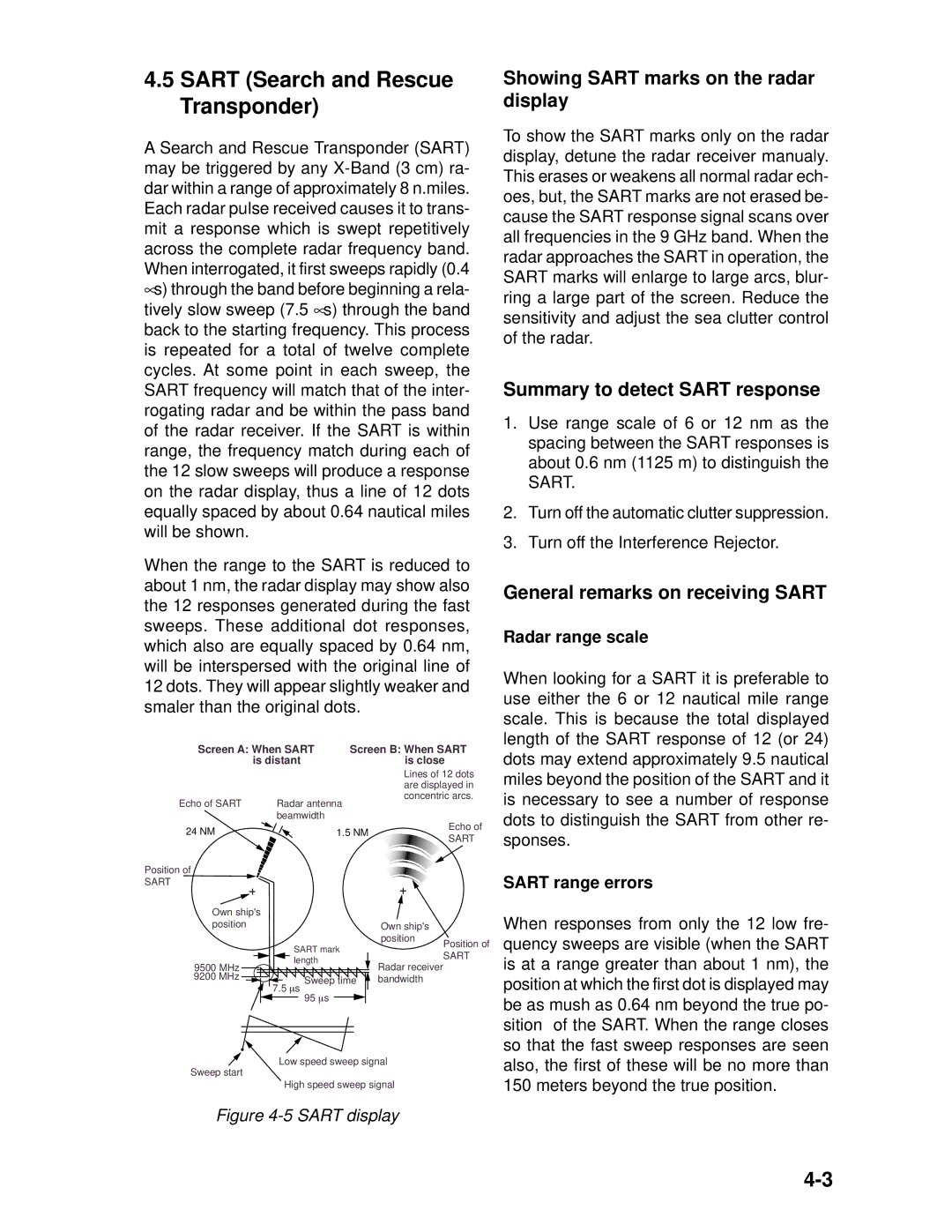
4.5SART (Search and Rescue Transponder)
A Search and Rescue Transponder (SART) may be triggered by any
When the range to the SART is reduced to about 1 nm, the radar display may show also the 12 responses generated during the fast sweeps. These additional dot responses, which also are equally spaced by 0.64 nm, will be interspersed with the original line of 12 dots. They will appear slightly weaker and smaler than the original dots.
Screen A: When SART | Screen B: When SART |
is distant | is close |
Showing SART marks on the radar display
To show the SART marks only on the radar display, detune the radar receiver manualy. This erases or weakens all normal radar ech- oes, but, the SART marks are not erased be- cause the SART response signal scans over all frequencies in the 9 GHz band. When the radar approaches the SART in operation, the SART marks will enlarge to large arcs, blur- ring a large part of the screen. Reduce the sensitivity and adjust the sea clutter control of the radar.
Summary to detect SART response
1.Use range scale of 6 or 12 nm as the spacing between the SART responses is about 0.6 nm (1125 m) to distinguish the SART.
2.Turn off the automatic clutter suppression.
3.Turn off the Interference Rejector.
General remarks on receiving SART
Radar range scale
When looking for a SART it is preferable to use either the 6 or 12 nautical mile range scale. This is because the total displayed length of the SART response of 12 (or 24) dots may extend approximately 9.5 nautical
Echo of SART | Radar antenna |
| beamwidth |
24 NM | 1.5 NM |
Position of
SART
Lines of 12 dots are displayed in concentric arcs.
Echo of
SART
miles beyond the position of the SART and it is necessary to see a number of response dots to distinguish the SART from other re- sponses.
SART range errors
Own ship's |
|
|
|
position |
| Own ship's |
|
|
| position | Position of |
| SART mark |
| |
|
| SART | |
| length | Radar receiver | |
9500 MHz |
| ||
|
| ||
9200 MHz | Sweep time | bandwidth |
|
7.5 | s |
|
|
| 95 s |
|
|
Low speed sweep signal
Sweep start
High speed sweep signal
Figure 4-5 SART display
When responses from only the 12 low fre- quency sweeps are visible (when the SART is at a range greater than about 1 nm), the position at which the first dot is displayed may be as mush as 0.64 nm beyond the true po- sition of the SART. When the range closes so that the fast sweep responses are seen also, the first of these will be no more than 150 meters beyond the true position.
